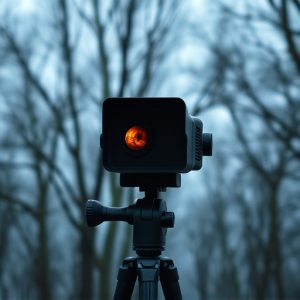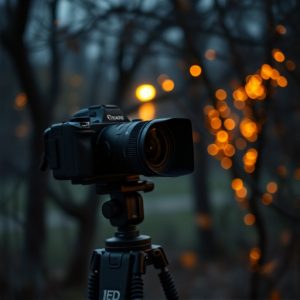Protect Your Business: Unveiling Hidden Cameras with RF Technology
Wireless decoy cameras strategically placed at entry points and vulnerable areas significantly enhan…….
Wireless decoy cameras strategically placed at entry points and vulnerable areas significantly enhance business security by mimicking real surveillance cameras, acting as powerful deterrents against intruders. These radio frequency-operated devices offer flexibility and cost-effectiveness, suiting diverse settings from retail to industrial sites. Modern hidden camera detection requires advanced techniques like RF detectors that identify unique signal patterns. Implementing robust security measures, including decoy cameras and regular updates, audits, and employee training, is crucial for businesses aiming to safeguard sensitive information and create a secure environment.
Uncover the hidden dangers of surveillance with our comprehensive guide on detecting wireless decoy cameras. In today’s digital age, business security is paramount, and understanding wireless decoy cameras is key. This article delves into the intricacies of these devices, providing practical detection methods and essential best practices. Learn how to safeguard your space using advanced tools and techniques tailored for business environments, ensuring a secure and private setting. Discover the game-changer in camera security: Wireless Decoy Cameras for Businesses.
- Understanding Wireless Decoy Cameras
- Detection Methods: Tools and Techniques
- Best Practices for Business Security
Understanding Wireless Decoy Cameras
Wireless decoy cameras, also known as dummy or fake cameras, are an effective tool in enhancing security for businesses. These devices mimic the appearance and functionality of real surveillance cameras but serve as a deterrent to potential intruders. By strategically placing them at entry points, parking lots, and other vulnerable areas, businesses can create the illusion of heightened security, discouraging unauthorized access and criminal activity.
For businesses looking to safeguard their premises, understanding wireless decoy cameras is crucial. Unlike traditional wired systems, these cameras offer flexibility and ease of installation. They operate on radio frequency (RF) signals, allowing them to be easily hidden and moved without the need for complex wiring. This makes them particularly useful in diverse business settings, from retail stores and offices to warehouses and industrial sites, providing a cost-effective way to strengthen overall security measures.
Detection Methods: Tools and Techniques
Hidden cameras have evolved beyond simple analog devices, with modern techniques employing radio frequency (RF) signals to transmit footage secretly. This necessitates a nuanced approach to detection, where specialized tools and techniques play a pivotal role. One effective method involves using wireless decoy cameras for businesses as a countermeasure. These decoys mimic the appearance of real cameras but do not record or transmit any signal, luring potential hidden cameras away from actual surveillance equipment.
Technicians employ advanced RF detectors to pinpoint the source of unauthorized signals, which can be challenging due to the wide range of frequencies in use. By analyzing the unique patterns and signatures of these signals, experts can identify suspicious activity and locate hidden cameras. This process combines hardware expertise with deep knowledge of modern camera technologies, ensuring that businesses remain vigilant against potential privacy breaches.
Best Practices for Business Security
Implementing robust security measures is essential for businesses aiming to protect sensitive information and create a safe environment. One innovative approach to enhancing security is the strategic use of wireless decoy cameras, which serve as powerful deterrents against unauthorized surveillance. These high-tech devices mimic real cameras, fooling potential intruders into believing they are under constant observation. By strategically placing these decoys in various locations throughout a business premises, owners can significantly reduce the risk of hidden camera installations and related privacy breaches.
Best practices for businesses include regular updates of security systems to keep up with evolving technology, conducting routine security audits, and educating employees about privacy awareness and security protocols. Additionally, employing a combination of physical security measures, such as access control systems and surveillance equipment, alongside wireless decoy cameras can create a layered defense, making it much harder for hidden cameras to go undetected.
Wireless decoy cameras are a sophisticated yet effective tool for businesses seeking enhanced security. By understanding the technology behind these hidden camera alternatives and employing the right detection methods, businesses can stay one step ahead of potential threats. The best practices outlined in this guide, combined with the latest tools and techniques, will empower business owners to safeguard their operations and protect sensitive information from prying eyes. Implement these strategies to create a robust security network that deters and detects hidden cameras, ensuring a safer and more secure work environment.


